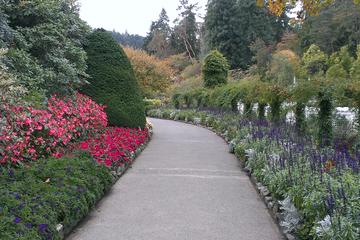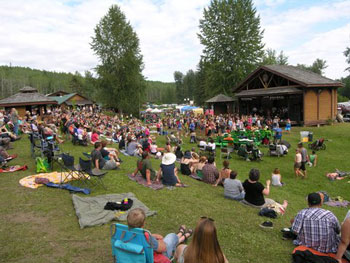
Hazelton, British Columbia
by Glen Cowley
The hills are alive with music in North Central British Columbia. Wending through forests, echoing off mountains and flowing with river and stream; music and song find perfect harmony in a setting inspiring even in its silence.
The Kispiox Valley Music Festival was celebrating its 18th annual birthday but for us it was experience number one. As frequenters of larger weekend music festivals in British Columbia’s more southerly climes we were awakened to the pleasures of a truly laid back experience free from the press of crowds but no less alive in the hum of music and the thrum of audience participation.
Every summer British Columbia comes alive with music festivals. Quite literally you could spend every weekend so entertained. My wife and I regularly favour well known and popular ones such as the Roots and Blues Festival in Salmon Arm and Music Fest at Courtenay on Vancouver Island. Multiple venues, big names, the press of thousands of happy people vying for seating and lineups for food and drink, great music and sense of being part of a vibrant throng will keep us returning year after year.
But there are the smaller festivals which offer something very unique. Kispiox opened our eyes to a new appreciation of the festival experience.
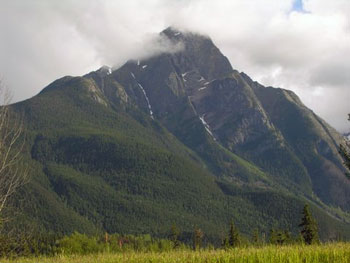 Turning off the Yellowhead Highway (Highway 16) at Hazelton, under the majestic gaze of the Roche de Boule Mountain Range, we journeyed 29 kilometres over breathtaking single lane bridges spanning jaw-dropping gorges and chattering rivers, wending tree-lined ways (largely paved) to emerge at the Kispiox Festival grounds hard by the Kispiox River. On the way we disturbed a solitary black bear strolling leisurely along the road.
Turning off the Yellowhead Highway (Highway 16) at Hazelton, under the majestic gaze of the Roche de Boule Mountain Range, we journeyed 29 kilometres over breathtaking single lane bridges spanning jaw-dropping gorges and chattering rivers, wending tree-lined ways (largely paved) to emerge at the Kispiox Festival grounds hard by the Kispiox River. On the way we disturbed a solitary black bear strolling leisurely along the road.
Colour exploded amid nature’s green and the pulse of music echoed through the trees. Relaxed and friendly volunteers took our admission, which at $60 for the three days (free if you are over 65 or under 12) is a good deal, and directed us to where it was all happening. Varying modes of accommodation filled the camping grounds, divided between “Quiet”, “Very Quiet”, “Musical” and “Performers and Co-ordinators”. Separate venues offered food services and the unique shopping opportunities only festivals afford. The family focus was amply revealed at the children’s area complete with toys, activities and its own entertainment stage.
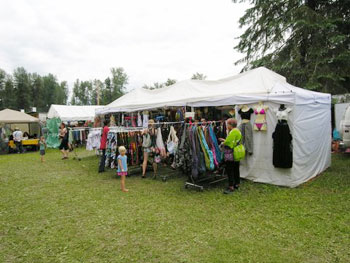 We arrived at the main River Stage in time to experience the large, colourfully attired, and local Twisted String Band, pumping out lively pieces which had audience members up and dancing while others watched from benches, personal seating or the natural amphitheatre overlooking the stage. The crowd, itself awash in colour, was composed of folk of all ages, hair lengths and attire. Nearby the Hall Stage, housed appropriately in a building with a hall, afforded entertainment free from the warming hand of the Sun.
We arrived at the main River Stage in time to experience the large, colourfully attired, and local Twisted String Band, pumping out lively pieces which had audience members up and dancing while others watched from benches, personal seating or the natural amphitheatre overlooking the stage. The crowd, itself awash in colour, was composed of folk of all ages, hair lengths and attire. Nearby the Hall Stage, housed appropriately in a building with a hall, afforded entertainment free from the warming hand of the Sun.
Set off on its own was the workshop tent where aficionados could meet and learn from performers on a wide range of skills.
Unlike many festivals there was no beer garden though the atmosphere lacked nothing by its absence; indeed the presence of imbibing was apparent but respectfully restricted to non stage areas and revealed no evidence of abuse.
The range of performers covered the bases from children’s’ music, drumming, belly dancing, vaudeville style acts and an eclectic assortment of music provided by both “local” talent and headliners. Such local talent engaged performers from as far away as Prince Rupert and Smithers and was no less impressive in its offerings than the fare provided by headliners.
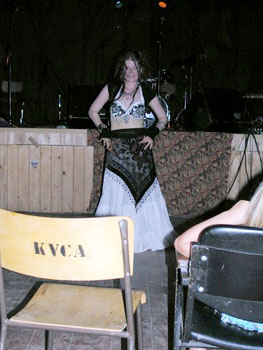 The 2018 headliners included The Tequila Mockingbird Orchestra, Jacki Treehorn, Fish and Bird from Victoria, multi-faceted CR Avery, the “post-modern Vaudeville duo the Cromoli Brothers, Hannah Epperson, Joanna Chapman-Smith, Jenny Ritter, the Harpoonist and the Axe Murderer, childrens’ performer Angela Brown of the Ta Daa Lady Show, Liron Man playing the hang drum and Bocephus King.
The 2018 headliners included The Tequila Mockingbird Orchestra, Jacki Treehorn, Fish and Bird from Victoria, multi-faceted CR Avery, the “post-modern Vaudeville duo the Cromoli Brothers, Hannah Epperson, Joanna Chapman-Smith, Jenny Ritter, the Harpoonist and the Axe Murderer, childrens’ performer Angela Brown of the Ta Daa Lady Show, Liron Man playing the hang drum and Bocephus King.
A pervasive sense of community permeated the atmosphere – young, old, children, families, First Nations were all well represented and the banter and interaction suggested many knew each other. It felt rather like being in the midst of a large family gathering.
Originally beginning in 1995 with 50 performers and 200 volunteers the festival has grown and now draws over 2000 participants to its fold.
Opening on Friday with a formal welcome by the resident Gitxsan First Nations peoples it ran all day Saturday and terminated with the closing ceremony at 7 pm Sunday. Great music, great atmosphere and great setting equaled a great time.
The Kispiox River chatters by on its forever journey to the sea adding its voice to the heartbeat of the festival, a constant reminder of the pristine beauty and balance of this world. The place and the event are worth time, energy and cost to see and experience. Beauty in nature and humanity does not abide being taken for granted. Hard to believe there are those entertaining pressing a high risk oil pipeline through this land of pristine beauty, purity, vibrant economy and diverse community.
If You Go:
Getting there
By car you are 1:30 hours west from Smithers or 2 hours east from Terrace which are both well served by rail, bus, road and air. Smithers has four flights daily from Vancouver Airport
Services:
There is no readily accessible indoor plumbing on site and it is recommended you bring water, though there is water available on site. There is special washroom access for persons with handicaps to the two existing indoor washrooms. Food services and an outdoor market are available.
Accomodation:
Camping is available on site as well at many off site locations. There are B & B’s throughout the Kispiox Valley as well as in Hazelton.
About the author:
Since 1994 Glen Cowley has parlayed his interest in sports, travel and history into both books and articles. The author of two books on hockey and over fifty published article ( including sports, biographies and travel) he continues to explore perspectives in time and place wherever his travels take him. From the varied landscapes of British Columbia to Eastern Canada and the USA, the British Isles, Germany, Switzerland, the Netherlands, Greece and France he has found ample fodder for features. See Glen Cowley’s website at: www.windandice.shawwebspace.ca
All photos by Glen Cowley:
The main stage – River Stage
Spectacular Roche de Boule
Festival Market
Belly Dancer

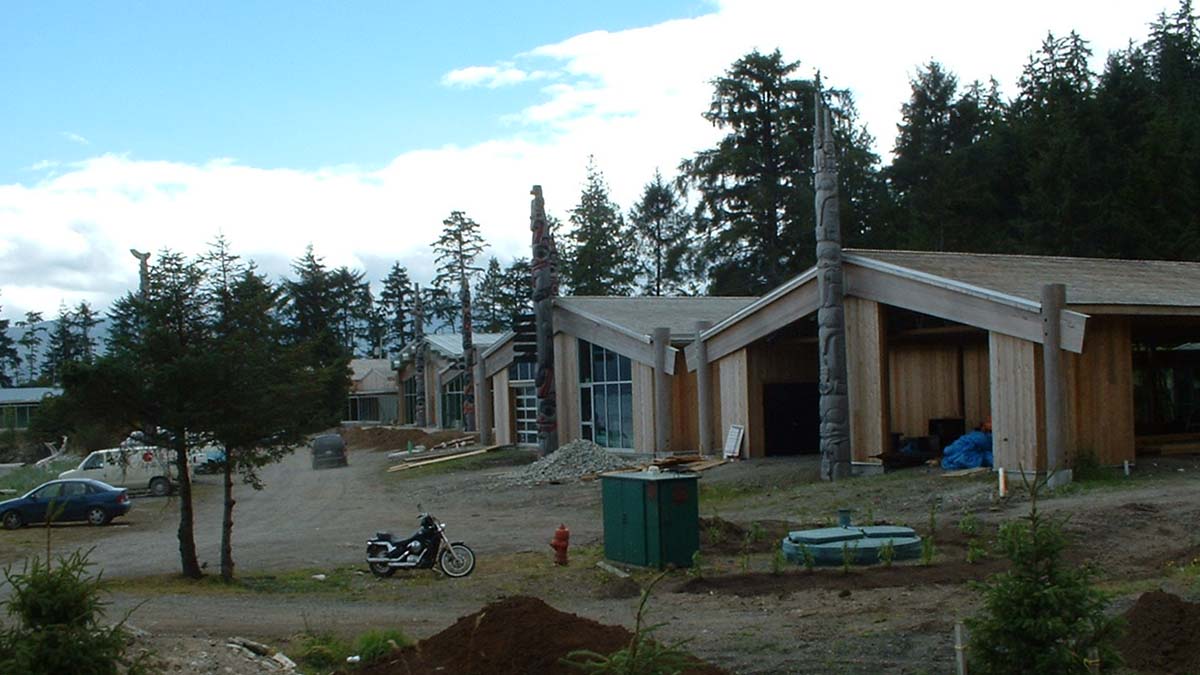
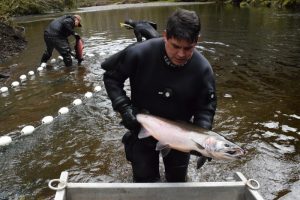

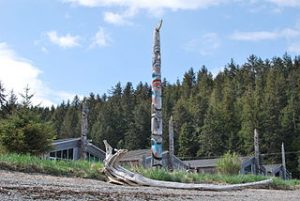
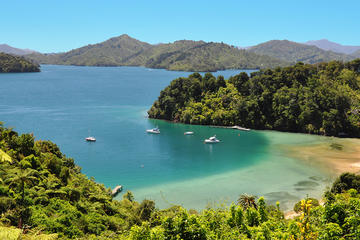
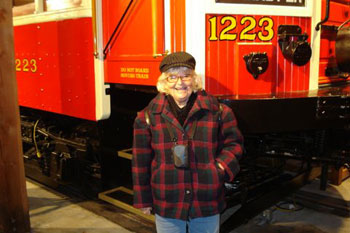
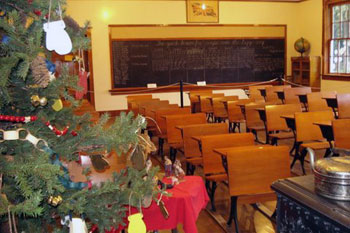 There are various ongoing events throughout the season including a theatre where you can watch old silent films, a blacksmith demonstration, carolers, a Christmas scavenger hunt, rug hooking demonstrations, children’s crafts and even a visit from Father Christmas. When you arrive at the ticket office, they’ll give you the day’s scheduled events and the location of where you can see them.
There are various ongoing events throughout the season including a theatre where you can watch old silent films, a blacksmith demonstration, carolers, a Christmas scavenger hunt, rug hooking demonstrations, children’s crafts and even a visit from Father Christmas. When you arrive at the ticket office, they’ll give you the day’s scheduled events and the location of where you can see them.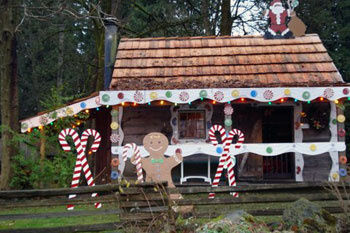 At the Elworth house it’s Christmas eve at the 1922 home of the Bateman family. It gives you a real sense of stepping back into the past. There’s also a replica of a log house decorated to resemble a gingerbread house, straight out of Hansel and Gretel (there’s no witch inside, though). Traditional Christmas decorations including a tree decorated with handmade ornaments are displayed in the Jesse Love farm house (circa 1893). And there’s a group of mannequin carolers in period costume in the living room ready to sing in a caroling diorama. In one of the bedrooms the bed is covered with a hand-made quilt demonstration the quilting skills of women in those days.
At the Elworth house it’s Christmas eve at the 1922 home of the Bateman family. It gives you a real sense of stepping back into the past. There’s also a replica of a log house decorated to resemble a gingerbread house, straight out of Hansel and Gretel (there’s no witch inside, though). Traditional Christmas decorations including a tree decorated with handmade ornaments are displayed in the Jesse Love farm house (circa 1893). And there’s a group of mannequin carolers in period costume in the living room ready to sing in a caroling diorama. In one of the bedrooms the bed is covered with a hand-made quilt demonstration the quilting skills of women in those days.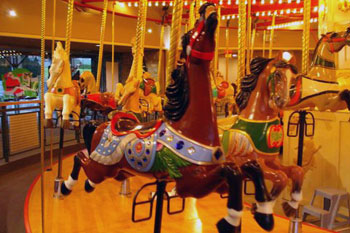 A ride on the vintage C.W. Parker Carousel is a must no matter what age you are. This is my one of my favourite activities at the Museum. The carousel originally operated at the PNE for many years and I remember riding it when I was a youngster. It was later restored, with each pony or sled carefully painted and repaired by donations from various people or organizations. Ride on the beautiful prancing horses, accompanied by the tunes of an original Wurlitzer organ. Great fun! At the gift shop next door you can buy those last minute trinkets to fill the Christmas stockings.
A ride on the vintage C.W. Parker Carousel is a must no matter what age you are. This is my one of my favourite activities at the Museum. The carousel originally operated at the PNE for many years and I remember riding it when I was a youngster. It was later restored, with each pony or sled carefully painted and repaired by donations from various people or organizations. Ride on the beautiful prancing horses, accompanied by the tunes of an original Wurlitzer organ. Great fun! At the gift shop next door you can buy those last minute trinkets to fill the Christmas stockings.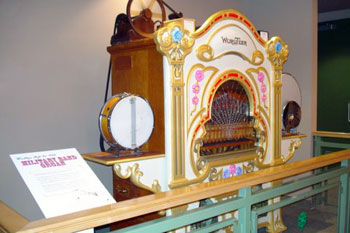 There’s lots to see at the Heritage Village, with hirty-two displays as well as the scheduled events. The afternoon I visited, a musical duo from Guatemala was playing “Feliz Navidad” and other seasonal songs inside the little church. After my tour I refreshed myself at the ice cream parlour with some lemon cake and a hot cup of cocoa. They also provide full meal service.
There’s lots to see at the Heritage Village, with hirty-two displays as well as the scheduled events. The afternoon I visited, a musical duo from Guatemala was playing “Feliz Navidad” and other seasonal songs inside the little church. After my tour I refreshed myself at the ice cream parlour with some lemon cake and a hot cup of cocoa. They also provide full meal service.
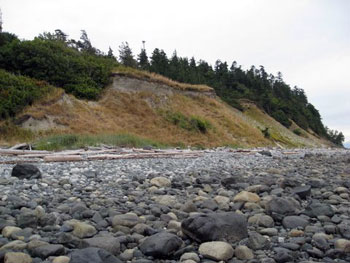 There are not many places on the Pacific Coast where we know for certain Vancouver walked, but this is one: the beach of Cape Mudge at the southern tip of Quadra Island, across Discovery Passage from Campbell River, British Columbia. In 1792, while charting the coast, Captain Vancouver visited here with his two ships, the Discovery and the Chatham. At that time, a Coast Salish village known as Tsa-Kwa-Luten thrived atop the sandy cliff. While the British ships sat at anchor on July 13, 1792, the natives paddled out in canoes and greeted the crews with fish and wild fruits in exchange for European articles of trade.
There are not many places on the Pacific Coast where we know for certain Vancouver walked, but this is one: the beach of Cape Mudge at the southern tip of Quadra Island, across Discovery Passage from Campbell River, British Columbia. In 1792, while charting the coast, Captain Vancouver visited here with his two ships, the Discovery and the Chatham. At that time, a Coast Salish village known as Tsa-Kwa-Luten thrived atop the sandy cliff. While the British ships sat at anchor on July 13, 1792, the natives paddled out in canoes and greeted the crews with fish and wild fruits in exchange for European articles of trade.
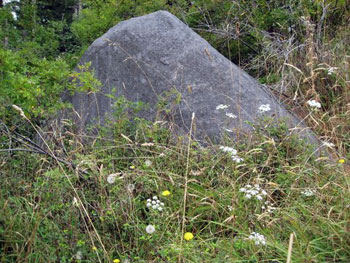
 An array of masks is the main feature: ravens, wolves, bears, killer whales, mosquitoes, double-headed serpents, all used in potlatch dances. Included in each description is the original owner, and some of their photographs are also on display. Many have Anglicized names such as Billy Assu and Amos Dawson, but their Kwakwaka’wakw names translate to honourifics such as “Always Giving Potlatches” or “High Ranking in Feasts”.
An array of masks is the main feature: ravens, wolves, bears, killer whales, mosquitoes, double-headed serpents, all used in potlatch dances. Included in each description is the original owner, and some of their photographs are also on display. Many have Anglicized names such as Billy Assu and Amos Dawson, but their Kwakwaka’wakw names translate to honourifics such as “Always Giving Potlatches” or “High Ranking in Feasts”.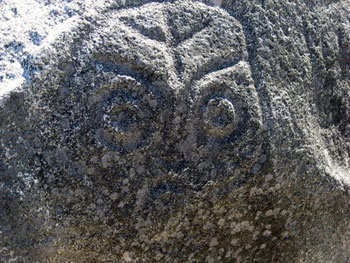 I learn that after Captain Vancouver’s voyage, a branch of the Kwakwaka’wakw known as the Lekwiltok descended from the north in their war canoes, with firearms acquired from European traders. Between 1792 and 1850, they raided and occupied numerous Salish villages and eventually commanded all of Discovery Passage—all save Tsa-Kwa-Luten, the village atop the sandy cliffs at Cape Mudge. So well fortified by nature, the Lekwiltok decided it was impossible to attack.
I learn that after Captain Vancouver’s voyage, a branch of the Kwakwaka’wakw known as the Lekwiltok descended from the north in their war canoes, with firearms acquired from European traders. Between 1792 and 1850, they raided and occupied numerous Salish villages and eventually commanded all of Discovery Passage—all save Tsa-Kwa-Luten, the village atop the sandy cliffs at Cape Mudge. So well fortified by nature, the Lekwiltok decided it was impossible to attack.
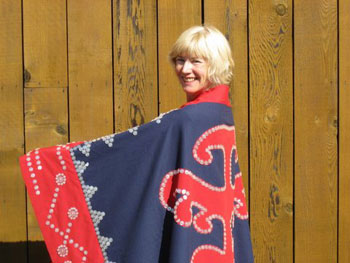 Tsa-Kwa-Luten Lodge is one way the native people of Cape Mudge have met the challenge of living in today’s society. The spacious lounge is designed like a Big House with a vaulted ceiling, the walls decorated with traditional art, including cedar paddles and button-blankets. The dining room features contemporary First Nations art. I feast on cedar-planked salmon, sip local Quadra Island wine, and gaze at the sunset over Vancouver Island.
Tsa-Kwa-Luten Lodge is one way the native people of Cape Mudge have met the challenge of living in today’s society. The spacious lounge is designed like a Big House with a vaulted ceiling, the walls decorated with traditional art, including cedar paddles and button-blankets. The dining room features contemporary First Nations art. I feast on cedar-planked salmon, sip local Quadra Island wine, and gaze at the sunset over Vancouver Island.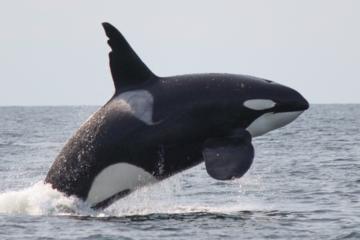
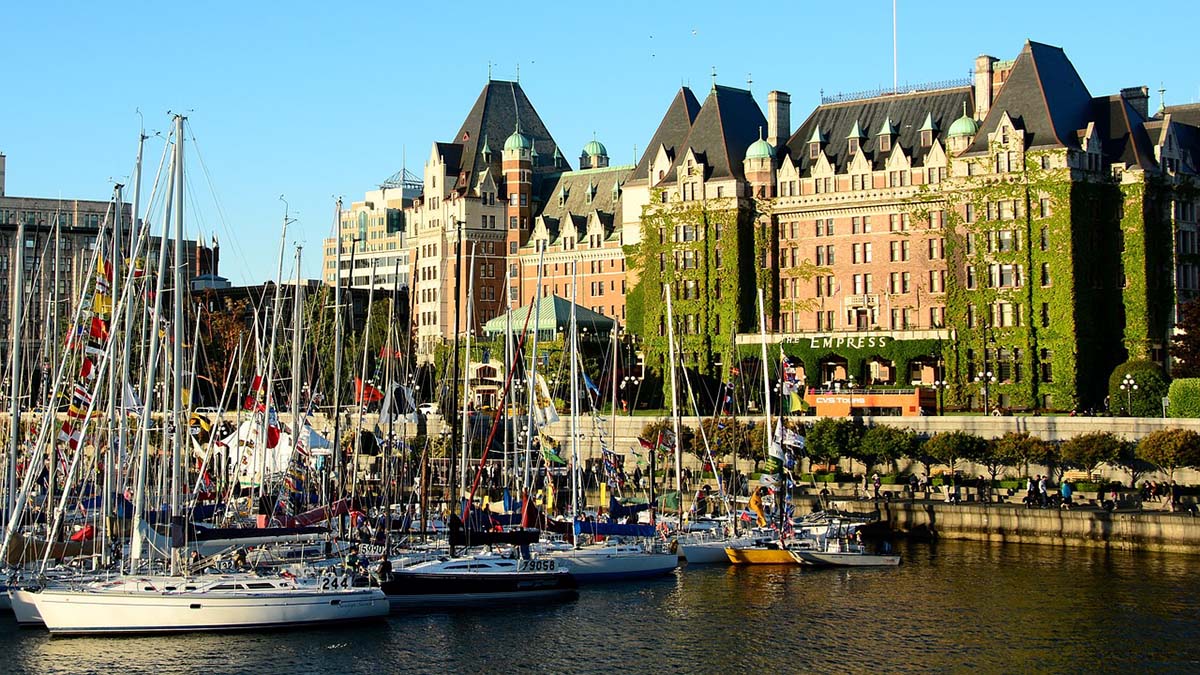
 We began our royal weekend celebration with high tea at the historic James Bay Tea Room. To commemorate the wedding of H.R.H. Prince William and Miss Kate Middleton, there was a special tea service with traditional goodies such as cucumber and cream cheese finger sandwiches, homemade scones with fresh clotted cream and strawberry jam, fresh strawberry cup with orange liquor and assorted petit fours. Of course, complete with a big pot of English tea!
We began our royal weekend celebration with high tea at the historic James Bay Tea Room. To commemorate the wedding of H.R.H. Prince William and Miss Kate Middleton, there was a special tea service with traditional goodies such as cucumber and cream cheese finger sandwiches, homemade scones with fresh clotted cream and strawberry jam, fresh strawberry cup with orange liquor and assorted petit fours. Of course, complete with a big pot of English tea!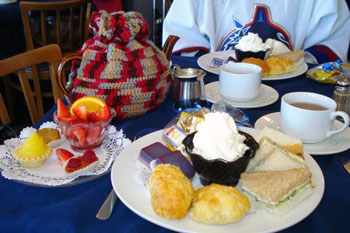 This quaint little tea house, tucked on a back street behind the Provincial Parliament Buildings, is a turn-of-the-century house, built in 1907 as a family home. It was transformed into this charming restaurant/tea room in the 1980s and is a popular spot for tourists to experience a real British style afternoon tea. It was a perfect place to celebrate the wedding, surrounded by royalty memorabilia with pictures of the royal family covering every inch of the walls,
This quaint little tea house, tucked on a back street behind the Provincial Parliament Buildings, is a turn-of-the-century house, built in 1907 as a family home. It was transformed into this charming restaurant/tea room in the 1980s and is a popular spot for tourists to experience a real British style afternoon tea. It was a perfect place to celebrate the wedding, surrounded by royalty memorabilia with pictures of the royal family covering every inch of the walls, 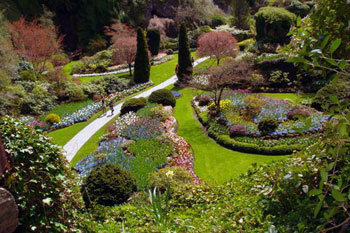 Robert Pim Butchart began as a cement manufacturer in Ontario and by the turn of the century had become a successful pioneer in this industry. He was lured to the West Coast of Canada because of the rich limestone deposits vital for cement production, and built a factory at Tod Inlet on Vancouver Island. His family established their home there and as the limestone in the quarry became exhausted, his wife Jennie conceived the idea for refurbishing the quarry into a beautiful garden in the style of the grand estates of the period.
Robert Pim Butchart began as a cement manufacturer in Ontario and by the turn of the century had become a successful pioneer in this industry. He was lured to the West Coast of Canada because of the rich limestone deposits vital for cement production, and built a factory at Tod Inlet on Vancouver Island. His family established their home there and as the limestone in the quarry became exhausted, his wife Jennie conceived the idea for refurbishing the quarry into a beautiful garden in the style of the grand estates of the period. The limestone quarry was transformed into the magnificent Sunken Garden. Mrs Butchart planned the landscaping of the property, transforming it into a garden that covers 22 ha (55 acres) of greenery, woodlands, flower gardens and horticultural displays. Mr. Butchart collected ornamental birds from all over the world including peacocks and ducks and built many elaborate birdhouses through the gardens.
The limestone quarry was transformed into the magnificent Sunken Garden. Mrs Butchart planned the landscaping of the property, transforming it into a garden that covers 22 ha (55 acres) of greenery, woodlands, flower gardens and horticultural displays. Mr. Butchart collected ornamental birds from all over the world including peacocks and ducks and built many elaborate birdhouses through the gardens. The Butchart’s love of Italy is evident in the lovely Italian Garden, located beside their house. Their tradition of collecting unusual objects when traveling is displayed with the Fountain of the Three Sturgeons, and the big bronze boar near the entrance of the Gardens, both from Florence Italy. A newer acquisition is the Rose Carousel, crafted by Brass Ring Entertainment of Sun Valley, California. It’s the only carousel on Vancouver Island and is a wonderful menagerie of thirty animals ranging from bears, horses, ostriches, zebras and mirrors. The designs were chosen by Robin Clarke, the Garden’s present owner and great granddaughter of Jennie Butchart.
The Butchart’s love of Italy is evident in the lovely Italian Garden, located beside their house. Their tradition of collecting unusual objects when traveling is displayed with the Fountain of the Three Sturgeons, and the big bronze boar near the entrance of the Gardens, both from Florence Italy. A newer acquisition is the Rose Carousel, crafted by Brass Ring Entertainment of Sun Valley, California. It’s the only carousel on Vancouver Island and is a wonderful menagerie of thirty animals ranging from bears, horses, ostriches, zebras and mirrors. The designs were chosen by Robin Clarke, the Garden’s present owner and great granddaughter of Jennie Butchart.